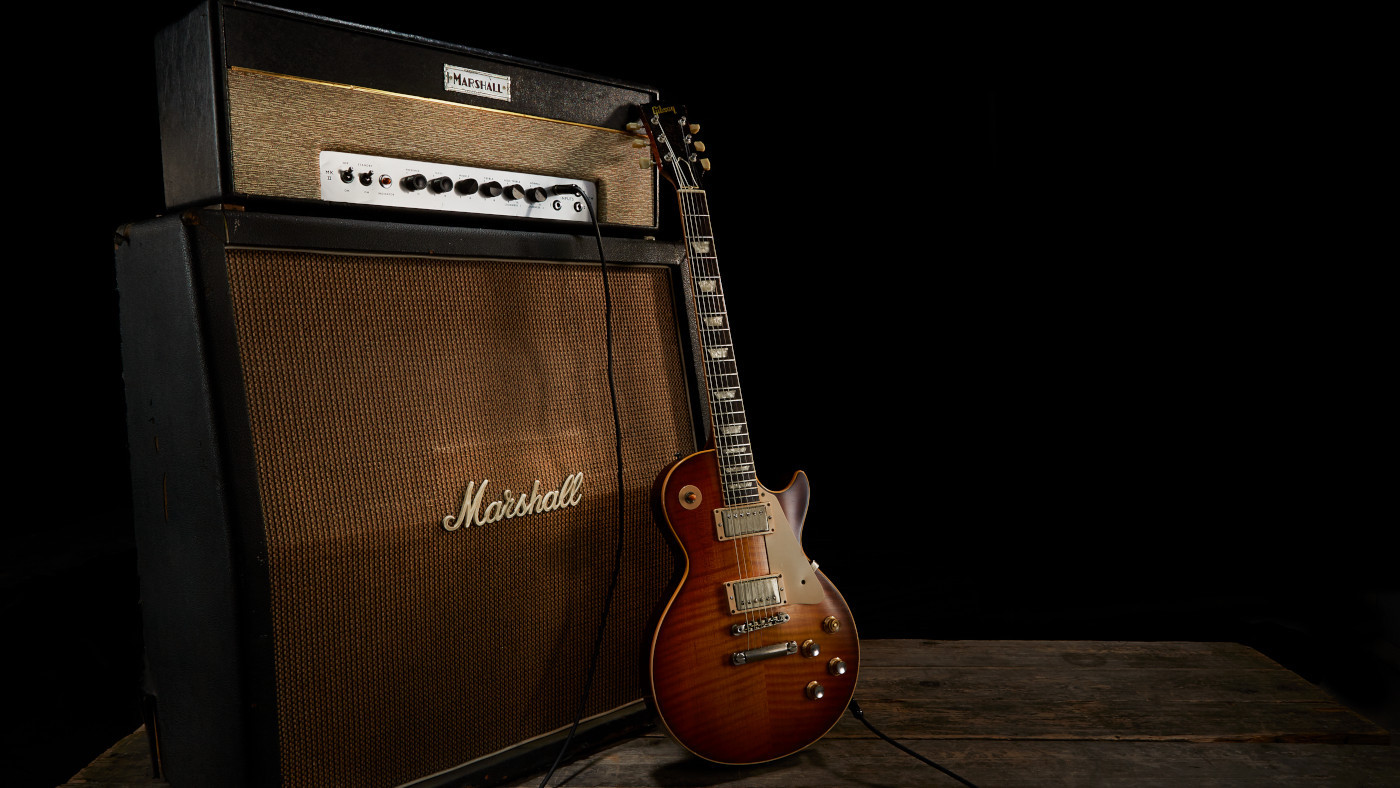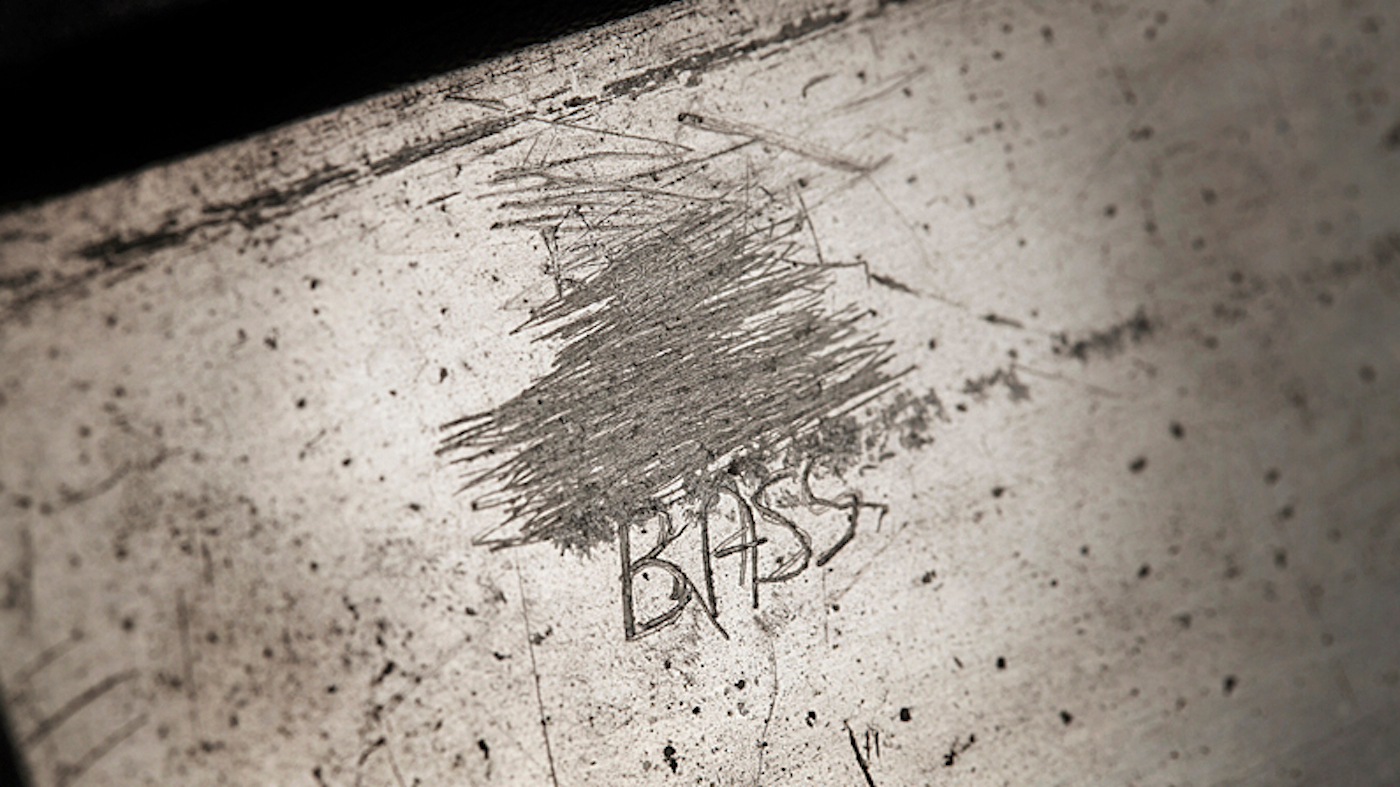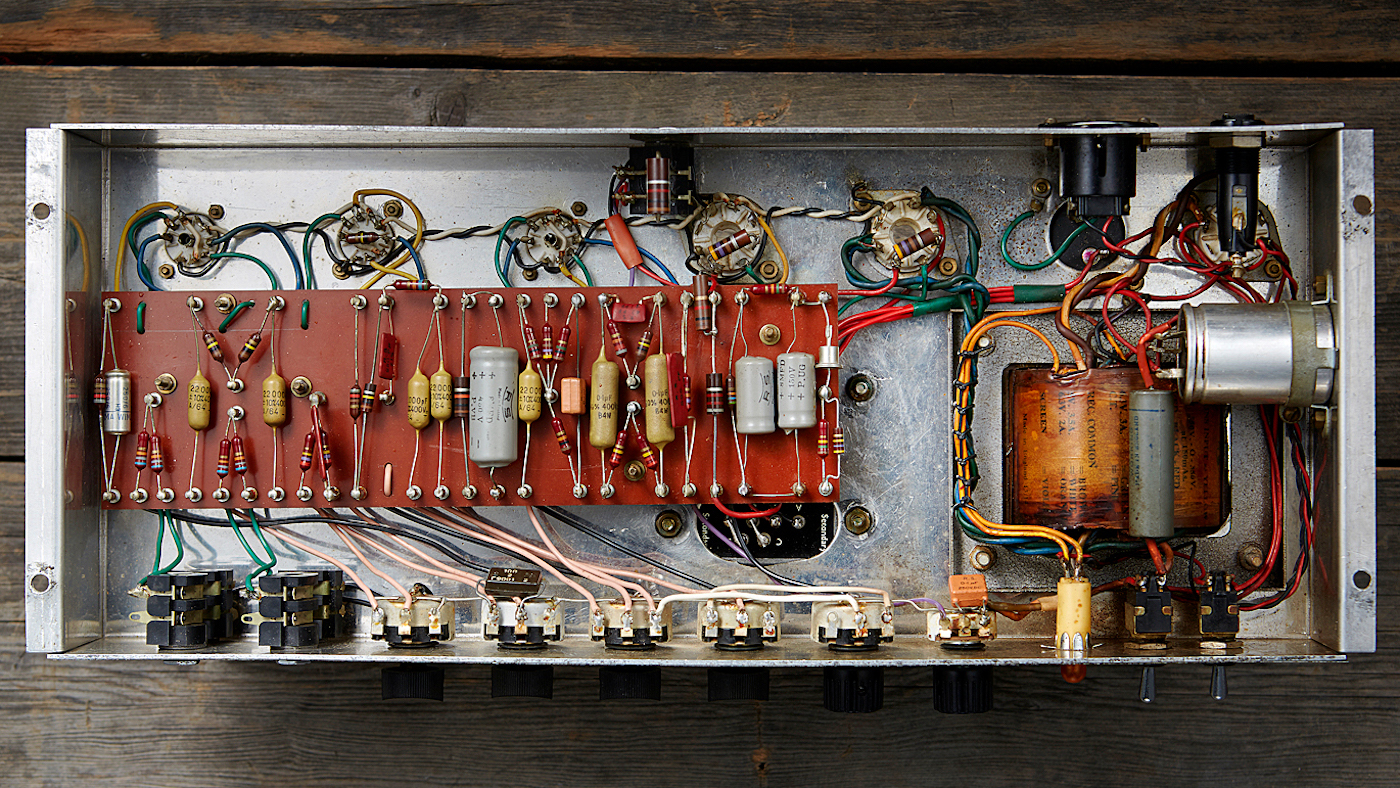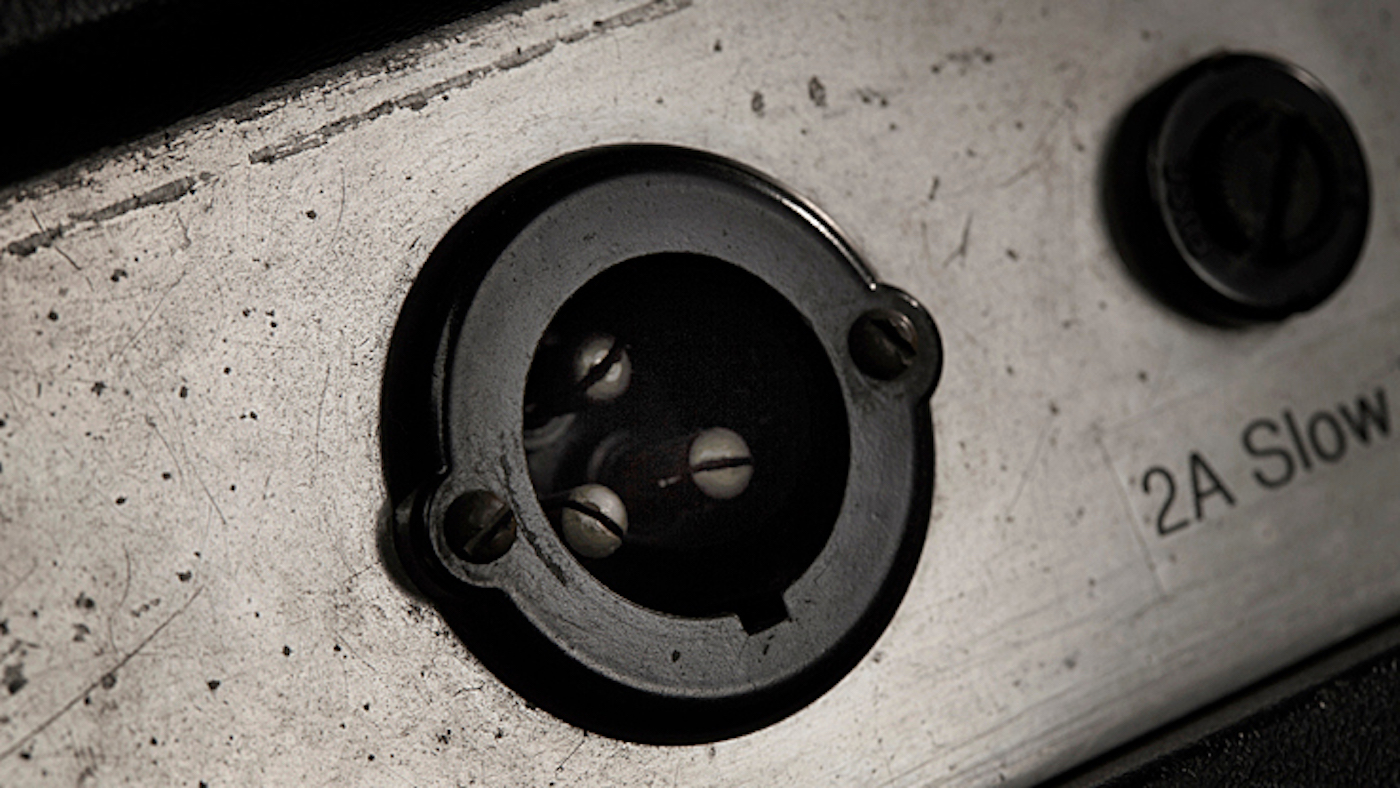Classic gear: Marshall JTM45 MK II
How Marshall’s debut amp opened a new chapter in rock ’n’ roll history...

Jim Marshall’s musical instrument shop in Hanwell became a hub for electric guitarists soon after opening its doors in July 1960.
Responding to customer requests for a new powerful amp design and in an effort to create a more affordable homegrown alternative to expensive US imports, by September 1962, the firm had prototyped its own edgier- sounding take on Fender’s 5F6A Bassman. It featured a pair of war-surplus 5881 power valves, three ECC83 preamp valves and a GZ34 rectifier valve.
The earliest versions can generally be distinguished by their white fabric fronts and red-on-silver capitalised Marshall-logo
Production commenced from the end of 1962 as the team - consisting of electronics engineers Ken Bran, Dudley Craven and Ken Underwood - fulfilled a steady stream of orders for Lead, Bass and PA versions of its new amplifier, which was soon being fitted with a pair of British-made KT66 power valves. Although none of these germinal Marshalls were labelled as ‘MK I’, shortly after the amp’s initial release, a move to wider-input jack spacing and the elimination of a Bassman-style polarity switch on its front panel (constructed of aluminium or white plastic) saw them branded ‘JTM 45 MK II’ in reference to Jim and his son Terry, along with the amp’s ambitious 45 watts RMS power rating.
Several cosmetic permutations of the amp emerged over time, but the earliest versions can generally be distinguished by their white fabric fronts and red-on-silver capitalised Marshall-logo metal badges (known as ‘coffin badges’ on account of them being sourced from a funeral hardware merchant). The first few of these seminal examples feature an offset chassis and all-white front, although the amp soon adopted its more familiar symmetrical appearance with a centralised front panel and logo. For a brief period thereafter, they continued to appear with an all-white front before changing to a two-tone black-and- white design in 1963 (referred to as the ‘sandwich front’) and, in 1964, Jim and co finally settled upon the classic Marshall all-black livery.
With orders increasing exponentially, in June 1964, Marshall opened its first factory operation in Hayes, Middlesex - initially enabling the company to quadruple its output to around 20 units per week - and, over the following months, the JTM 45 MK II continued to evolve. Gold Plexiglas front panels appeared and the logo changed twice - first to a larger red-on-silver, then black-on-gold, Plexiglas design in block letters. This was followed, in late 1965, by the introduction of Marshall’s now iconic script logo set in white plastic (at this time embellished with either gold or silver plating). The distinctive Marshall look was now complete.
In 1965, the JTM 45 MK II received separate model number designations for each available application, including the PA (1985), Bass (1986) and Lead (1987) units, and a fourth version - the Organ amplifier (1989) - was added to the range. However, in early 1966, a new breed of 50-watt designs featuring EL34 power valves and solid-state rectification signalled the beginning of the end for Marshall’s inaugural JTM 45 MK II range and it was soon phased out as the new era of hard rock began to take shape.
1964 Marshall JTM 45 MK II (Bass model)

1. Codes
Get the MusicRadar Newsletter
Want all the hottest music and gear news, reviews, deals, features and more, direct to your inbox? Sign up here.
‘Bass’ scratched into rear panel; normally ‘SER’ prefixed four-digit serial number (beginning with ‘2’ in 1964) and Lead/ Bass/PA designation stamped or scored on rear panel
2. Metalwork
Aluminium front panel with black lettering branded ‘JTM 45’ (on right) & MK II (on left); aluminium rear panel; 21⁄2-inch aluminium chassis with external cabinet anchors

3. Circuit
Perforated Tufnell circuit board; two KT66 power valves; one GZ34 rectifier valve; three ECC83 preamp valves (including one phase splitter); Radiospares RS De Luxe output transformer (30 watts maximum rated output); 45 watts RMS power rating; one 500pF Bass model voicing capacitor
4. Ornamentation
Black Tolex cover; two-tone black-and-white ‘sandwich’ front; gold front strip; metal ‘coffin badge’ with red-on-silver capitalised Marshall logo; four original black-plastic vee knobs (two replacements); leather handle
5. Power & Connections
Front (from left to right): chrome baton power and standby switches; round amber indicator light; four instrument inputs comprising two ‘High Treble’ (channel 1) and two ‘Normal’ (channel 2) sockets. Rear: single speaker cable socket (for use with 16 ohms speaker cabinet); Bulgin power cable socket; 2A fuse

6. Controls
Front only (from left to right): ‘Presence, Bass, Middle, Treble, High Treble/Loudness 1, Normal/Loudness 2’ (all labelled 0-10)

The Evolution of the Marshall JTM 45 MK II
- September 1962 Prototype developed; 2x 5881, 3x ECC83 & 1x GZ34 valves
- Late 1962 2x 5881 or KT66, 3x ECC83 & 1x GZ34 valves; all-white front; red-on-silver metal badge logo
- Early 1963 ‘JTM 45 MK II’ branding; no polarity switch on front; wider-input jack spacing
- 1963 2-tone black/white front
- Early 1964 2x KT66 power valves standard
- Mid-1964 to mid-1965 All-black front; gold Plexiglas front panel; red-on-silver then black-on-gold Plexiglas logo
- 1965 Park 45 (rebranded Marshall JTM 45 MK II) available
- Late 1965 Plastic script Marshall logo; metal cap knobs standard
- 1966 Discontinued
- 1989 JTM 45 Lead amp reissued
Rod Brakes is a music journalist with an expertise in guitars. Having spent many years at the coalface as a guitar dealer and tech, Rod's more recent work as a writer covering artists, industry pros and gear includes contributions for leading publications and websites such as Guitarist, Total Guitar, Guitar World, Guitar Player and MusicRadar in addition to specialist music books, blogs and social media. He is also a lifelong musician.
“Its mission is simple: unleash the power of any amplifier or line-level source without compromise”: Two Notes promises a “watershed” in tube amp control with the Torpedo Reload II
“A pedal that sings with harmonic richness and blooming touch response”: Tone King offers up boutique tube amp tones for your pedalboard with the Imperial Preamp












